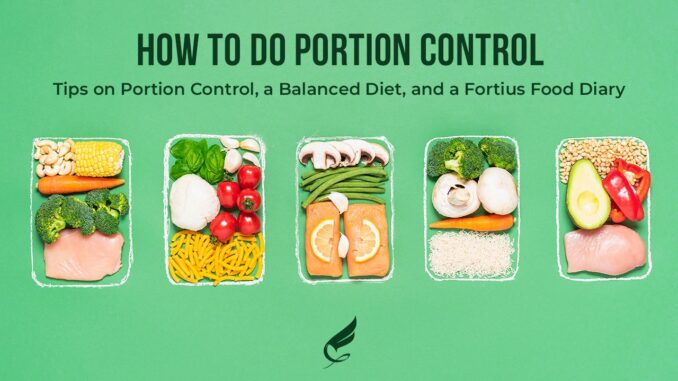
Introduction: In a world where oversized portions have become the norm, mastering portion control is essential for maintaining a healthy diet and achieving weight management goals. Whether you’re aiming to lose weight, maintain a healthy weight, or simply improve your overall well-being, understanding how to control portion sizes is a fundamental aspect of healthy eating. In this comprehensive guide, we will explore the importance of portion control, practical strategies for managing portion sizes, and tips for incorporating portion control into your daily routine.
Chapter 1: Understanding Portion Control Before diving into strategies for controlling portion sizes, it’s important to understand what portion control entails. Portion control refers to the practice of moderating the amount of food you eat during a meal or snack to ensure that you consume an appropriate number of calories and nutrients for your body’s needs. By practicing portion control, you can prevent overeating, manage calorie intake, and maintain a healthy weight. Additionally, portion control allows you to enjoy a balanced diet while still indulging in your favorite foods in moderation.
Chapter 2: The Benefits of Portion Control Portion control offers numerous benefits for both physical and mental health. By maintaining appropriate portion sizes, you can prevent overconsumption of calories, which is a leading cause of weight gain and obesity. Portion control also helps regulate blood sugar levels, reduce the risk of chronic diseases such as diabetes and heart disease, and improve digestion. From a psychological perspective, practicing portion control can promote mindfulness around eating, enhance satiety, and prevent feelings of guilt or deprivation commonly associated with restrictive diets.
Chapter 3: Practical Strategies for Portion Control There are several practical strategies you can implement to master portion control in your daily life. One approach is to use visual cues, such as comparing portion sizes to common household items like a deck of cards or a tennis ball. Additionally, you can practice mindful eating by paying attention to hunger and fullness cues, eating slowly, and savoring each bite. Another effective strategy is to pre-portion your meals and snacks by using measuring cups, food scales, or portion control containers. Planning and preparing meals in advance can also help prevent overeating and promote healthier food choices.
Chapter 4: Tips for Portion Control When Eating Out Eating out presents unique challenges when it comes to portion control, as restaurant meals tend to be larger and higher in calories than homemade meals. However, there are several strategies you can employ to navigate restaurant menus and make healthier choices. Consider sharing an entree with a dining companion, opting for appetizer-sized portions or side dishes instead of full meals, and asking for dressings and sauces on the side. Additionally, be mindful of portion distortion and be wary of oversized portions or all-you-can-eat buffets.
Chapter 5: Portion Control and Weight Management For individuals looking to manage their weight or lose weight, portion control is a valuable tool for achieving and maintaining success. By monitoring portion sizes and calorie intake, you can create a calorie deficit that promotes weight loss while still enjoying a balanced and nutritious diet. It’s important to focus on nutrient-dense foods such as fruits, vegetables, lean proteins, and whole grains, while limiting high-calorie, low-nutrient foods such as sugary snacks and fried foods. Remember that sustainable weight loss is achieved through small, gradual changes to your eating habits over time.
Chapter 6: Overcoming Common Challenges Despite its many benefits, mastering portion control can be challenging, especially in today’s food-centric culture. Common obstacles include emotional eating, social pressures, and environmental cues that trigger overeating. To overcome these challenges, practice self-awareness and identify triggers that lead to overeating. Develop healthy coping strategies for managing stress, boredom, and other emotions without turning to food. Surround yourself with a supportive environment that encourages healthy eating habits, and seek support from friends, family, or a registered dietitian if needed.
Conclusion: Mastering portion control is a key component of a healthy lifestyle and can have a significant impact on your overall health and well-being. By understanding the principles of portion control, implementing practical strategies, and staying mindful of your eating habits, you can take control of your diet and achieve your health and weight management goals. Remember that portion control is not about deprivation or strict rules but rather about making informed choices and finding balance in your eating habits. With dedication, consistency, and a positive mindset, you can embrace portion control as a sustainable and enjoyable way to nourish your body and live your best life.